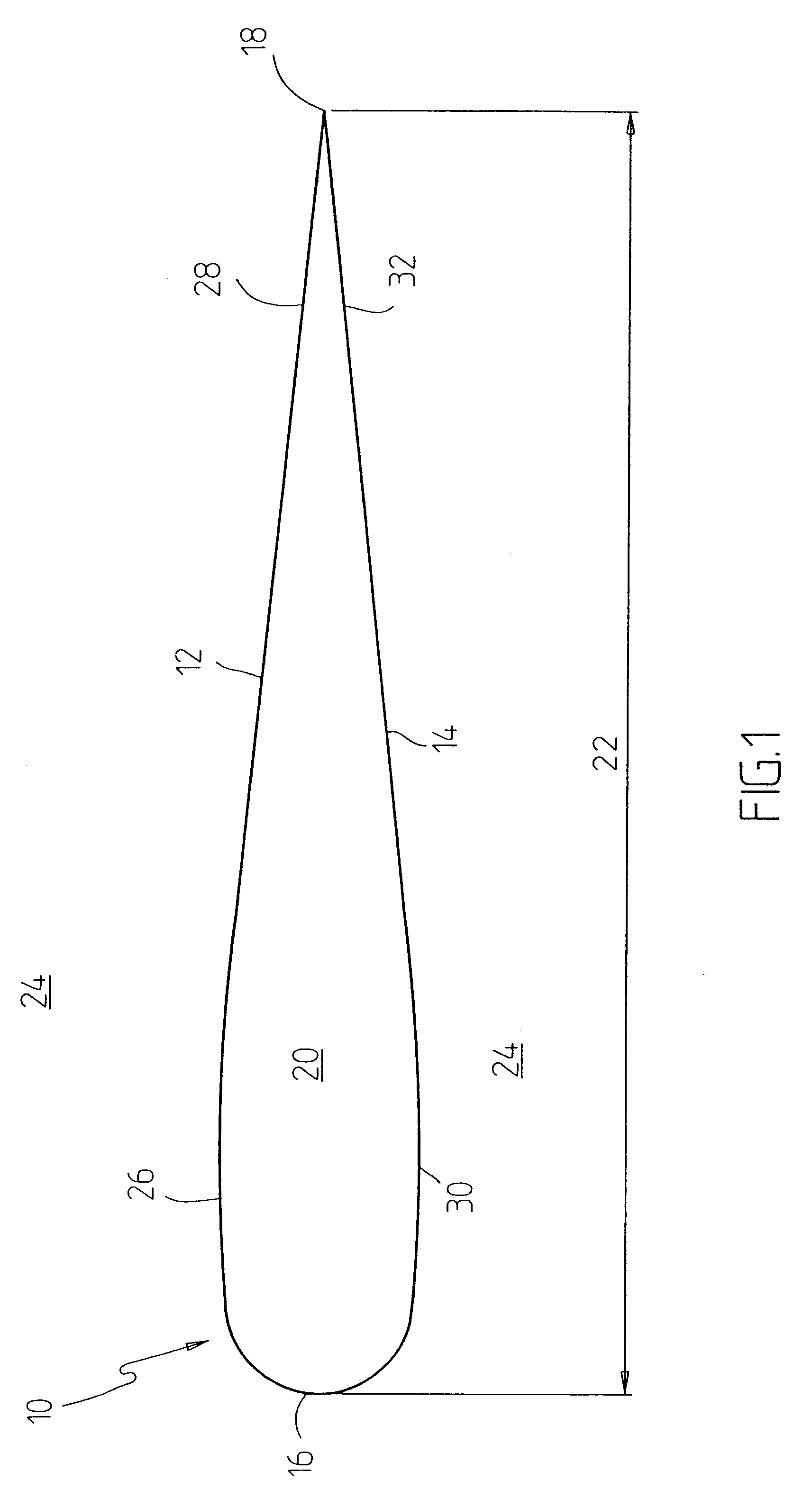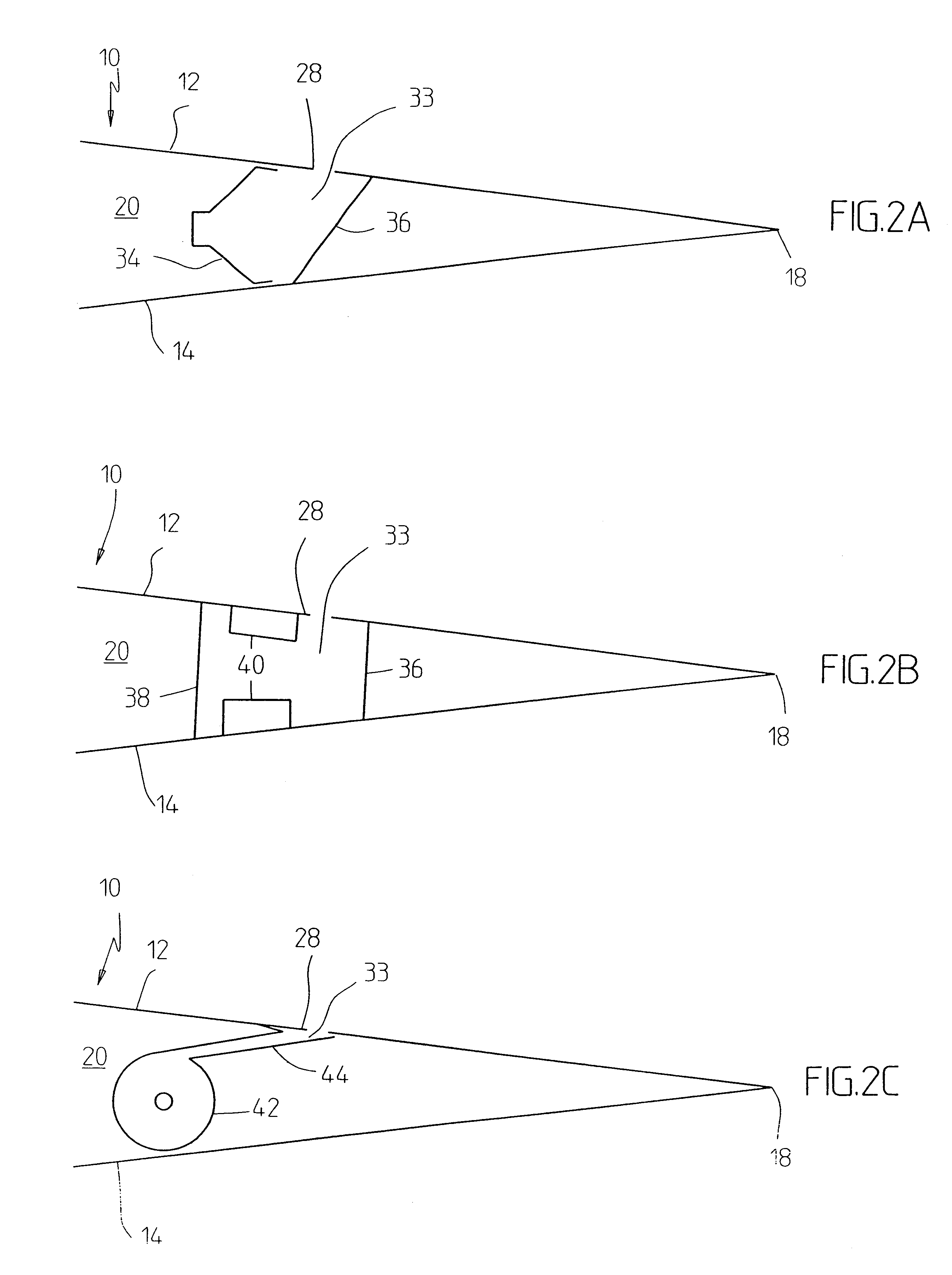Airfoil with dynamic stall control by oscillatory forcing
a technology of oscillatory force and airfoil, which is applied in the field of airfoil, can solve the problems of high maintenance cost, low maximum flight speed, and limited maneuverability
- Summary
- Abstract
- Description
- Claims
- Application Information
AI Technical Summary
Benefits of technology
Problems solved by technology
Method used
Image
Examples
Embodiment Construction
All dynamic stall experiments were carried out on a 365 mm NACA0015 airfoil--a schematic cross section of which is shown in FIG. 3. Airfoil 10' was equipped with 36 pressure taps (not shown) and incorporated a flap 60 whose axis 62 was located at the 75% chord position. The flap angle (.delta..sub..function.) could be deflected in the range -10.degree. to 30.degree.. The main body of airfoil 10' was essentially hollow with interior 20 serving as a plenum chamber. Two slots were employed independently (never simultaneously) for forcing and blowing, namely: a 1 mm slot 64 at the leading-edge and a 1.5 mm slot 66 at the flap-shoulder. The slot not in use was closed either internally or by means of tape on the airfoil surface.
All dynamic pressure measurements were made with a PS4000 multi-channel array of pressure transducers (AA Lab Systems). The pressure transducers were calibrated for amplitude attenuation and phase shift due to the finite length of tubing between each pressure-tap a...
PUM
 Login to View More
Login to View More Abstract
Description
Claims
Application Information
 Login to View More
Login to View More - R&D
- Intellectual Property
- Life Sciences
- Materials
- Tech Scout
- Unparalleled Data Quality
- Higher Quality Content
- 60% Fewer Hallucinations
Browse by: Latest US Patents, China's latest patents, Technical Efficacy Thesaurus, Application Domain, Technology Topic, Popular Technical Reports.
© 2025 PatSnap. All rights reserved.Legal|Privacy policy|Modern Slavery Act Transparency Statement|Sitemap|About US| Contact US: help@patsnap.com



